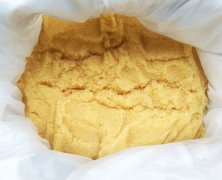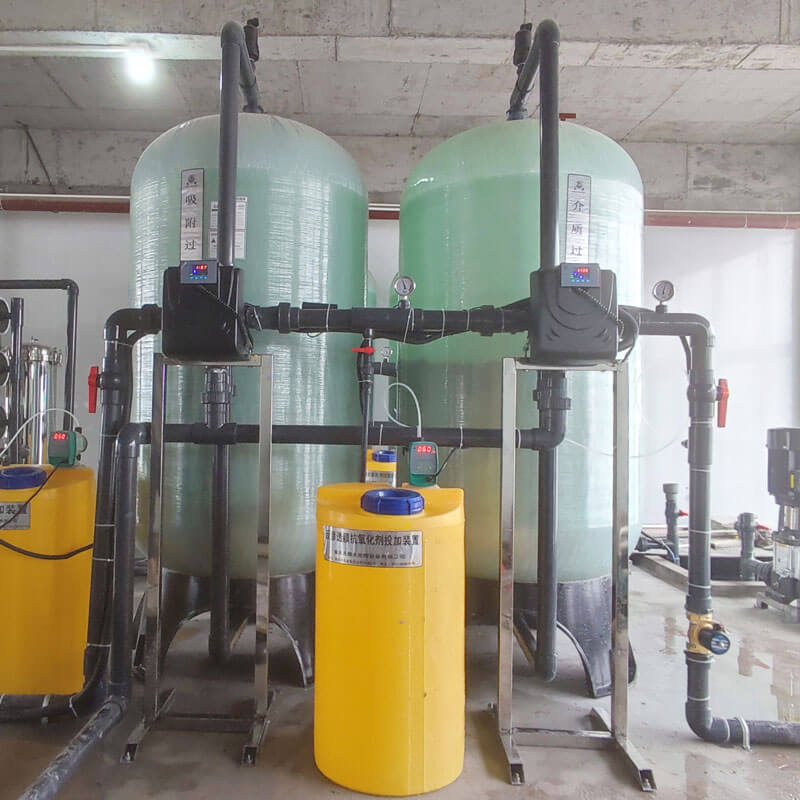What is ion exchange resin and how does it work?

While many of us have heard of ion exchange (IX) resins, few of us have a grasp on how the technology actually works. Whether you’re weighing potential treatment strategies, looking for ways to get the most out of your existing IX resins, or simply curious about IX chemistry, you may be asking “What is ion exchange resin and how does it work?”
No matter your goals, this article will help you to make better decisions on the right water treatment strategies for your facility by helping you to better understand IX resin technology, and how it serves a variety of water treatment and separation needs.
What are ion exchange resins?

Ion exchange is a reversible chemical reaction where dissolved ions are removed from solution and replaced with other ions of the same or similar electrical charge. Not a chemical reactant in and of itself, IX resin is instead a physical medium that facilitates ion exchange reactions. The resin itself is composed of organic polymers that form a network of hydrocarbons. Throughout the polymer matrix are ion exchange sites, where so-called “functional groups” of either positively-charged ions (cations) or negatively-charged ions (anions) are affixed to the polymer network. These functional groups readily attract ions of an opposing charge.
How does ion exchange resin work?

To fully understand how IX resins work, it is important to first understand the principles of the ion exchange reaction. Put simply, ion exchange is a reversible interchange of charged particles—or ions—with those of like charge. This occurs when ions present on an insoluble IX resin matrix effectively swap places with ions of a similar charge that are present in a surrounding solution.
The IX resin functions this way because of its functional groups, which are essentially fixed ions that are permanently bound within the polymer matrix of the resin. These charged ions will readily bond with ions of an opposing charge, which are delivered through the application of a counterion solution. These counterions will continue to bond with the functional groups until equilibrium is reached.
During an IX cycle, the solution to be treated would be added to the IX resin bed and allowed to flow through the beads. As the solution moves through the IX resin, the functional groups of the resin attract any counterions present in the solution. If the functional groups have a greater affinity for the new counterions than those already present, then the ions in solution will dislodge the existing ions and take their place, bonding with the functional groups through shared electrostatic attraction. In general, the greater the size and/or valency of an ion, the greater affinity it will have with ions of an opposite charge.

Let’s apply these concepts to a typical IX water softening system. In this example, the softening mechanism consists of a cation exchange resin where sulphonate anion (SO3–) functional groups are fixed to the IX resin matrix. A counterion solution containing sodium cations (Na+) is then applied to the resin. The Na+ are held to the fixed SO3– anions by electrostatic attraction, resulting in a net neutral charge in the resin. During an active IX cycle, a stream containing hardness ions (Ca2+ or Mg2+) is added to the cation exchange resin. Since the SO3– functional groups have a greater affinity for the hardness cations than for the Na+ ions, the hardness ions displace the Na+ ions, which then flow out of the IX unit as part of the treated stream. The hardness ions (Ca2+ or Mg2+), on the other hand, are retained by the IX resin.
Mingmo group have specialists engaged in water treatment for many years and produces high capacity & performance ion exchange reisin as well for commercial and industrial use.




 Containerized Water Treatment Plant | One of The Best Water Treatment Solutions
Containerized Water Treatment Plant | One of The Best Water Treatment Solutions Commercial Reverse Osmosis (RO)System
Commercial Reverse Osmosis (RO)System 10T/H Reverse Osmosis Equipment for food factory
10T/H Reverse Osmosis Equipment for food factory 1T/H Tap Water Reverse Osmosis treatment equipment
1T/H Tap Water Reverse Osmosis treatment equipment 3T/H Dual-stage ultra pure water system for cigarette factory
3T/H Dual-stage ultra pure water system for cigarette factory Reverse Osmosis Water Purification Plant for Tap water 4TPH
Reverse Osmosis Water Purification Plant for Tap water 4TPH UF(ultrafiltration) Water Purification System for Reservoir Water 40TPH
UF(ultrafiltration) Water Purification System for Reservoir Water 40TPH RO(reverse osmosis) Water Purification Plant for Food Factory 8TPH*2 Set
RO(reverse osmosis) Water Purification Plant for Food Factory 8TPH*2 Set